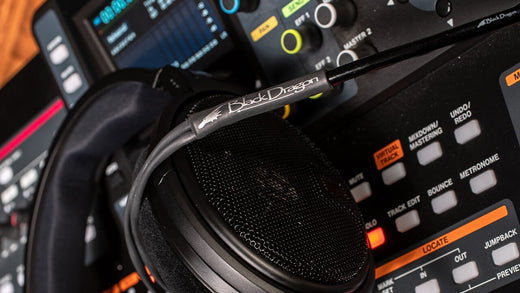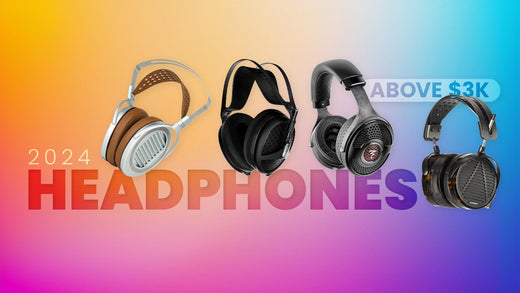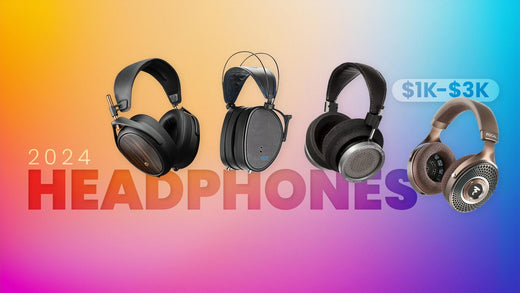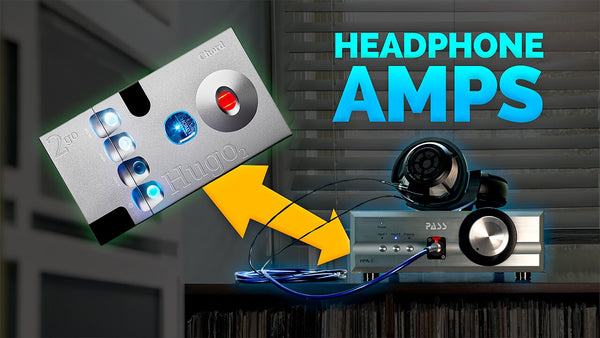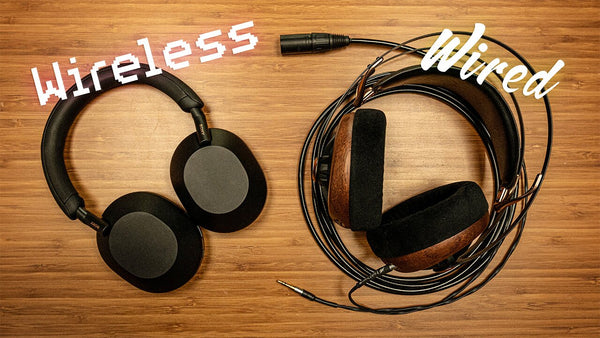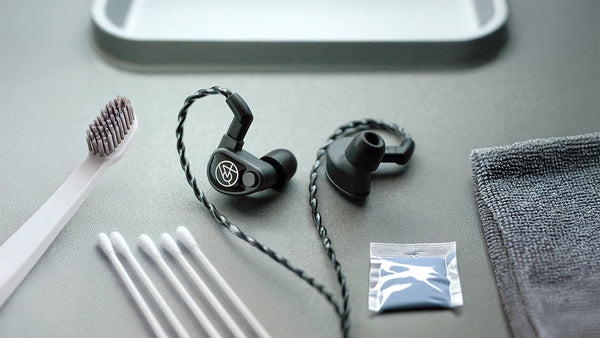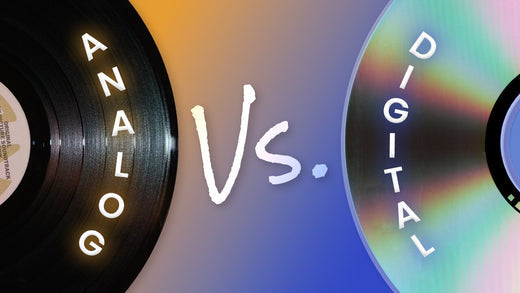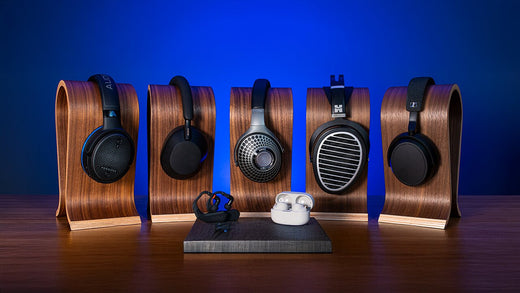Credit: iStock
What Are Bone Conduction Headphones?
Bone Conduction Headphones Allow for Situational Awareness
When you think of headphones and IEMs (earphones), you likely envision ear cups that sit directly over the ear, or ear pieces that sit directly in the ear canal. Depending on the particular device, you're going to get some degree of sound isolation when you have them on. But there's a different type of headphone from brands like Aftershokz don't block the ear at all, thereby allowing you to hear outside sounds. These are bone conduction headphones, with ear pieces that sit in front of the ear, on the cheekbone. Bone conduction refers to the method by which these devices interact with the ear to make soundwaves audible. They work differently than traditional headphones that produce sound via air conduction. Bone conduction headphones have difficulty reproducing the full range of audible hearing, and for this reason have not traditionally been popular with audiophiles. They have, however, been useful in the military and for people with hearing loss, as well as for runners and other people who exercise outdoors and need to maintain situational awareness. Recently, the IEM manufacturer Empire Ears came out with an IEM called the Legend EVO that incorporates a bone conduction driver along with more common driver types that use air conduction. In this instance, the bone conduction driver allows for enhanced frequency response in the IEM. We'll take a look at that below. First, let's take a deeper look at air conduction vs. bone conduction.
Air Conduction: How it Works
Simply put, hearing involves the conversion of sound saves into electrical signals that are carried to the brain. The process of air conduction in regular headphones involves all three regions of the ear: outer, middle, and inner. Soundwaves enter the outer ear and then travel along the ear canal into the ear drum, where they vibrate the ossicles (bones) that in turn stimulate hair cells inside of the cochlea in the inner ear. The cochlea has three fluid-filled canals. When these canals respond to the vibrations of the ossicles, they set in motion the hair cells. The movement of these hair cells causes neurotransmitters to send electrical impulses to the brain, which then converts them into sound.
Headphones that use air conduction have ear cups that sit around or over the ear.
IEMs (in-ear monitors) that use air conduction have ear pieces that sit directly in the ear canal, like earbuds.
These devices are sending sound waves through the entirely of the ear, from the outer ear, through the middle ear, to the inner ear.
How Do Bone Conduction Headphones Work?
Credit: Wikipedia
Bone conduction is different from air conduction in that the outer and middle ear are not involved. Instead, bones in the jaw and skull pass vibrations directly to the inner ear. The bone conduction device performs the job of your eardrums. Bone conduction technology has been used for decades, both in the development of hearing aids and by the military. Bone conduction is generally perceived to have a lower, deeper tone because the skull conducts lower frequencies more efficiently than air. Through bone conduction, humans can perceive ultrasonic frequencies (beyond 20kHz). Now, humans can detect ultrasound up to at least 100kHz, but perception generally requires direct contact of the source with the body. Bone conduction technology is not new.
It's been said that Beethoven used bone conduction technology to listen to his music after he became deaf. To do this, he put his composer’s wand against his piano and clenched the other end with his teeth. This allowed him to “hear” the music through his jawbones!
Dual Conduction: How it Works
The IEM manufacturer Empire Ears did something different when it set out to create its latest IEM, the Legend EVO. They used a bone conduction driver along with more traditional IEM driver types (dynamic and balanced armature). The Legend EVO, therefore, uses both air conduction and bone conduction - known as dual conduction. Unlike listening devices that exclusively use bone conduction, the Legend EVO does sit outside of the ear; it sits inside like a traditional IEM. With the Legend EVO, a full range 5Hz-20kHz frequency response is delivered via air conduction from the dynamic and balanced armature drivers while imaging, soundstage, detail retrieval, low frequency extension, and reverb is extraordinarily enhanced up to 35kHz via bone conduction from the bone conduction driver. What this means is that you sense more air and energy in your music. The sound becomes livelier.
Do Bone Conduction Headphones Have Good Sound Quality?
There is a reason that bone conduction headphones have not traditionally been popular with audiophiles: They are not designed for high-fidelity playback. Bone conduction headphones have trouble replicating the entire frequency range (20 Hz to 20,000 Hz) that a human ear can hear. This is because they transmit sound waves through your skull via vibrations. Additionally, because bone conduction headphones do not obscure the ear, the listener can hear outside sounds. (Note that bone conduction headsets also have some sound leakage, so those around you can hear what you're listening to.) These sounds will compete with what you're listening to, which is not ideal for critical listening and will not provide a truly immersive listening experience. However, you are not necessarily looking to engage in critical listening while you're running or cycling. And if you're going to be listening to podcasts and not music, sound quality becomes less of an issue.
Who Shoud Use Bone Conduction Headphones?
Bone conduction headphones are generally known to appeal to two groups of people: Those who need to maintain situational awareness, and those with certain types of hearing loss. Because bone conduction listening devices don't cover the ear, you can still hear ambient noise (outside noise) while wearing them. This makes them convenient for runners, cyclists, and others to maintain awareness of their surroundings while listening to their favorite music. Some bone conduction headphones are sweatproof as well as waterproof, making them ideal for swimmers. Also, because they are battery operated, there are no wires to contend with while exercising; you can get up to eight hours of battery life. And because the headband sits around the back of the hear (not on top), you can wear a helmet. Bone conduction headphones have also been used by people with certain types of hearing loss, since they bypass the eardrum entirely. Bone conduction headphones can be good for people who suffer from tinnitus, an intermittent or constant ringing in the air that can be exacerbated by traditional headphones, particularly closed-back headphones with sealed cups. These headphones block outside sound, which can make tinnitus worse. Finally, bone conduction headphones are a good choice for people who don't want to wear traditional full-size headphones and who don't want to put IEMs or earphones inside of their ear canal.
Are Bone Conduction Headphones Safe?
Because bone conduction listening devices sit outside of the ear, they have traditionally been viewed as safer than traditional headphones and earphones. However, damage to the inner ear can still occur. The biggest factor governing hearing damage is listening to music at high volumes. Sustained exposure to loud sounds can damage the hairs and nerves in the cochlea. Because bone conduction headphones still send sound to the cochlea, they can cause hearing loss if used improperly. From a different perspective, though, bone conduction headphones are safe in that they allow listeners to maintain awareness of their surroundings. If you are running on a country road, for example, you need to be able to hear oncoming vehicles. This makes bone conduction headphones a good choice from a safety perspective.
Featured Products


